
Annual Forbs Around Las Vegas, Vegetation Around Las Vegas
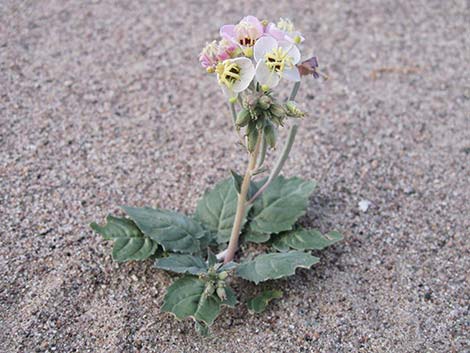 |
General: Brown-eyed Evening-Primrose (Chylismia claviformis) is an annual forb with basal leaves and a flowering stalk. The flowers are white, aging to pink, with a dark brown center. The stigma hangs out beyond the petals. Young leaves with a short petiole appear to be entire, but as the leaves age, the petiole grows, and the older leaves become 1-pinnate. The terminal leaflet is always much larger than the other leaflets. Brown-eyed Evening-Primrose is a common component of desert vegetation communities in washes and other gravelly and rocky soils. Around Las Vegas, look for this species in washes at Lake Mead and Death Valley. Family: Evening Primrose (Onagraceae). Other Names: Browneyes. Formerly Camissonia claviformis. |
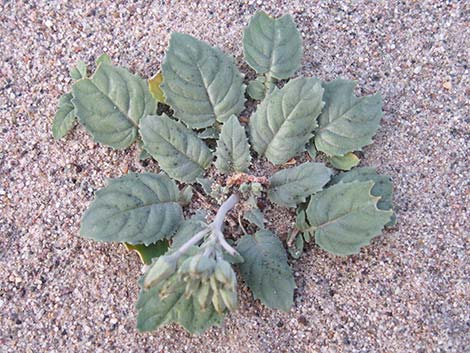 |
Plant Form: Basal leaves with a nodding flower stalk. Height: To about 2 feet, usually shorter. Stems: Usually one flowering stalk. Leaves: Generally basal; generally broad and 1-pinnate, but large terminal leaflet may look like an entire leaf; lateral leaflets much smaller than terminal leaflet. Flowers: Blooms during early spring; flowers generally open at dusk. Flowers clustered at the top of the flower stalk; petals 4, white aging to pinkish with dark brown base. The stigma hangs out beyond the petals. The base of the petals is brown Seeds: |
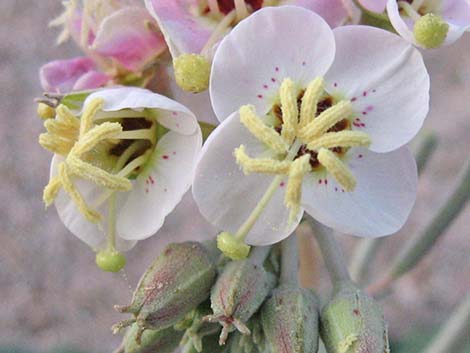 |
Habitat: Washes and gravel or rocky soils. Elevation: To about 6,000 feet; usually lower elevations. Distribution: California to Idaho, Utah, and New Mexico. Comments: Flowers open in the evening and generally are pollinated by moths. |
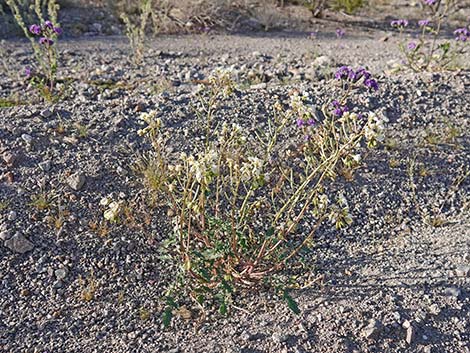 |
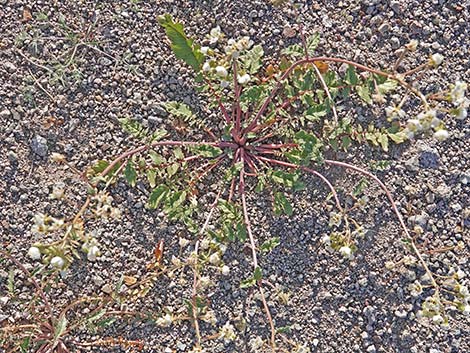 |
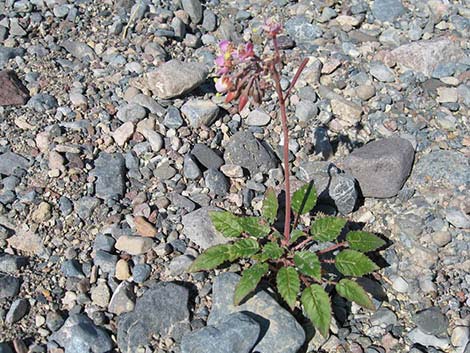 |
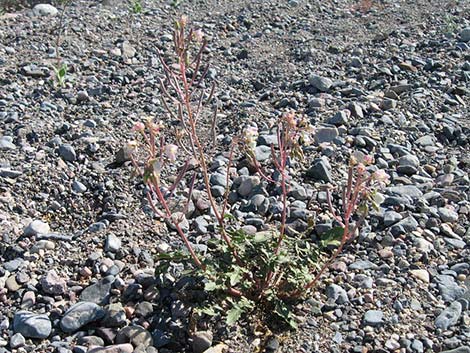 |
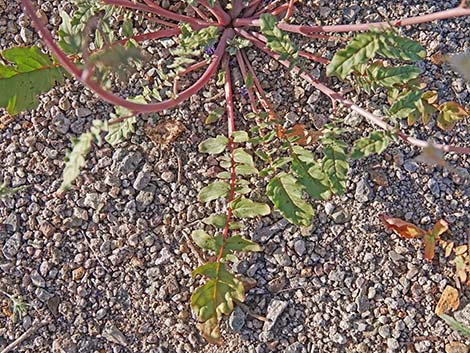 |
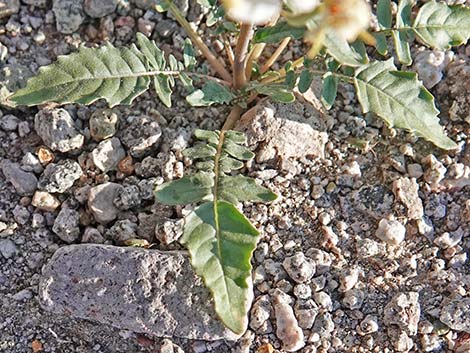 |
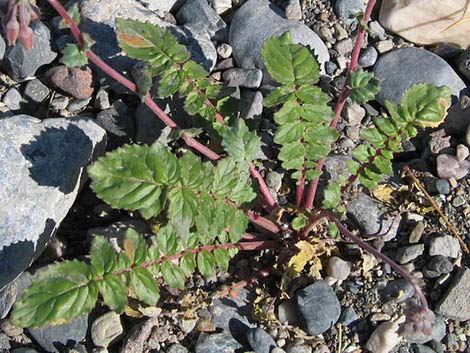 |
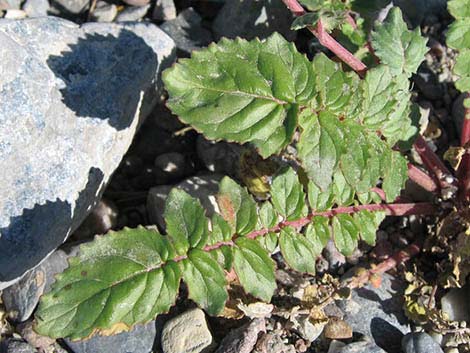 |
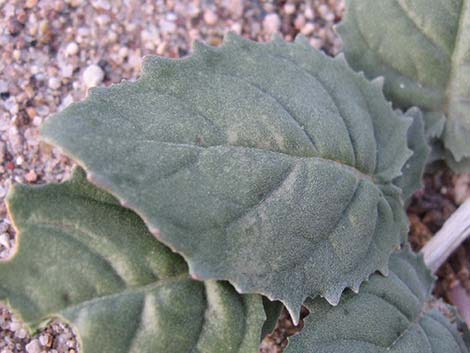 Young leaves appear broad with notched edges |
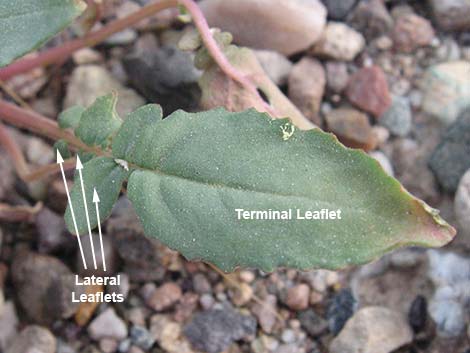 Older leaves show 1-pinnate nature, but the terminal leaflet is always much larger than the lateral leaflets |
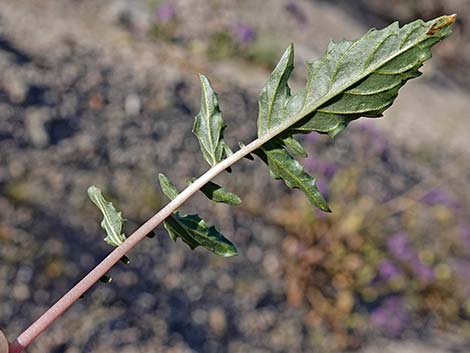 |
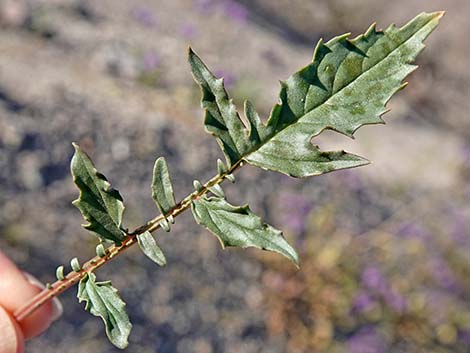 |
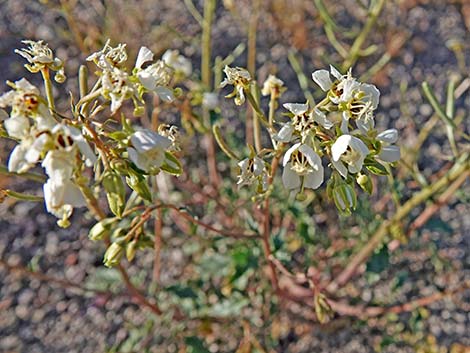 |
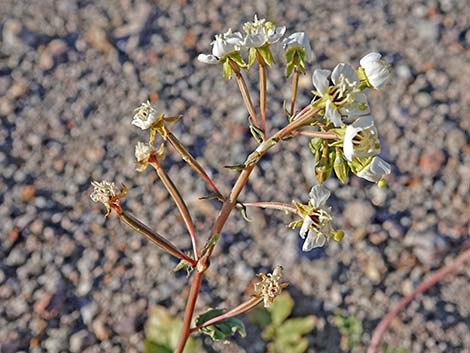 |
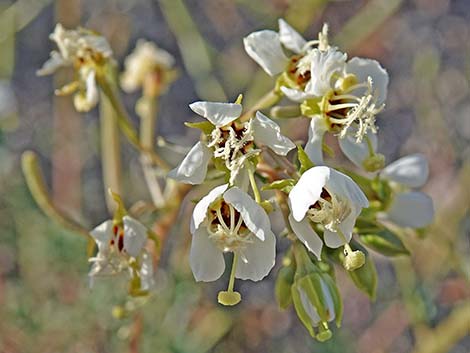 |
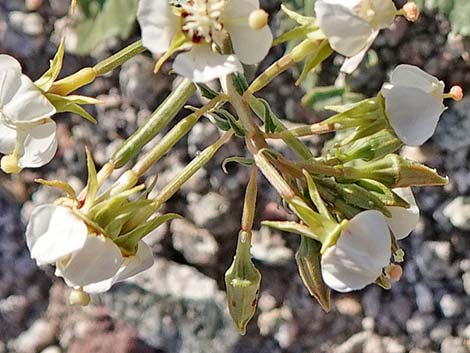 |
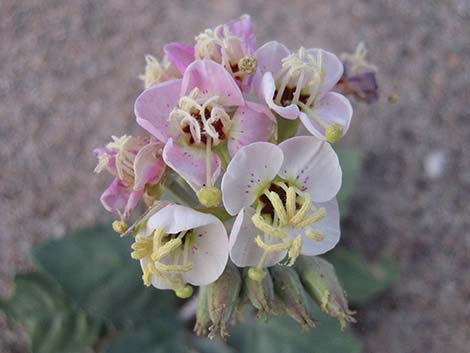 |
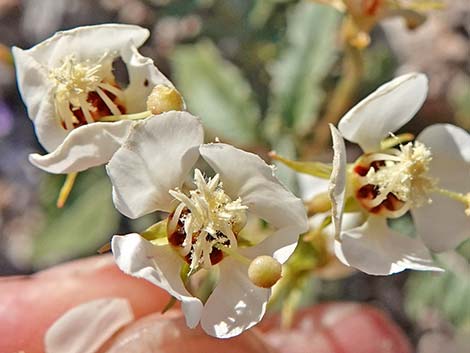 |
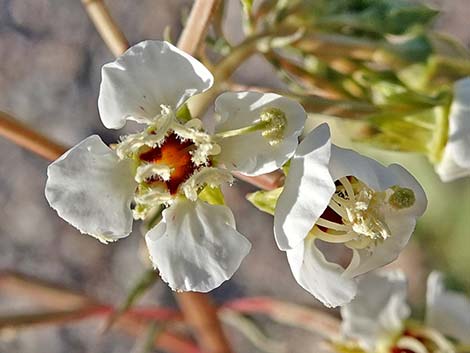 |
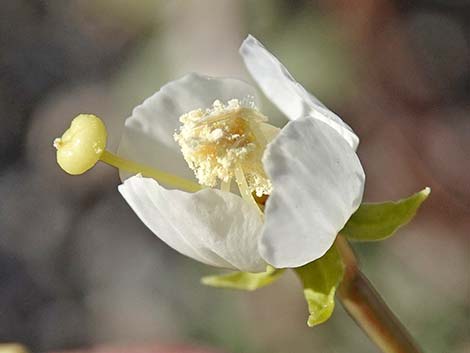 |
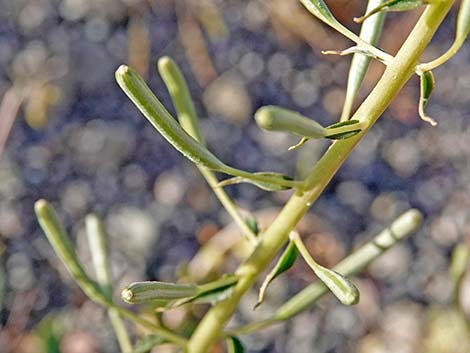 Developing fruits |
 More to come ... |
Note: All distances, elevations, and other facts are approximate. Names generally follow the USDA database.
![]() ; Last updated 240904
; Last updated 240904
| All Annual Forbs | Plant Species Index | Glossary | Copyright, Conditions, Disclaimer | Home |